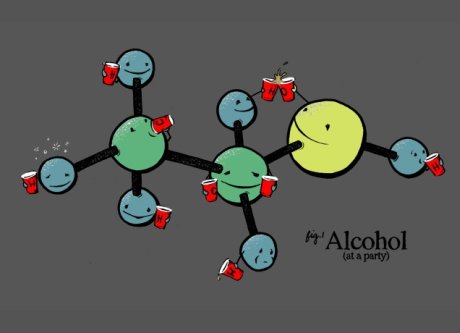At room temperature, it is a polar solvent and is used as an antifreeze , solvent, fuel, and as a denaturant for ethyl alcohol. It is not popular for machinery, but may be found in automotive windshield washer flui de-icers, and gasoline additives. In automotive usage, methanol is the type of alcohol that was used as antifreeze.
Alcohol in general, and methanol in particular, is an excellent antifreeze, and it is still used in some windshield washer fluid solutions and other applications. Methanol is a polar liquid at room temperature. It is used as antifreeze , solvent, fuel, and as a denaturant for ethanol.
The chemical is also used to produce biodiesel via transesterification reaction. Because methanol has toxic properties, it is frequently used as a denaturant additive for ethanol manufactured for industrial purposes. Freezing and flash points for methanol or methyl based heat-transfer fluids or brines.
Ethanol (denatured alcohol, ethyl alcohol) It has similar characteristics to methanol as an antifreeze : it flows well, has good heat transfer, and good freeze protection at 15° F. The flash point is an indication of how easy a chemical may burn. Ethanol is also very flammable and can cause explosions and asphyxiation. Pure ethanol (the type of alcohol that people drink) is not as toxic as methanol,.
Antifreeze is a also known as radiator fluid and is used to reduce the heat build up in car engines. The most common source of ethylene glycol is automotive antifreeze or radiator coolant, where concentrations are high. Other sources of ethylene glycol include windshield deicing agents, brake flui motor oil, developing solutions for hobby photographers, wood stains, solvents, and paints. Ethylene glycol was develope and soon replaced methanol as an engine cooling system antifreeze. It has a very low volatility compared to methanol and to water.
Antifreeze mainly contains ethylene glycol and sometimes even methanol and isopropanol. Some of the poisonous components of antifreeze are ethylene glycol and propylene glycol. Antifreeze poisoning can lead to harmful effects and the main purpose is the consumption of the compounds present in it. Although water-base antifreeze also contains liquid alcohols like ethylene glycol, propylene glycol, and methanol. Propylene glycol is also an ingredient in some foods and cosmetics.
It isn’t considered harmful in small amounts, according to the Agency for Toxic Substances and Disease Registry (ATSDR). Apart from antifreeze , ethylene glycol may also be found in brake fluid. There are antifreeze methanol suppliers, mainly located in Asia. The top supplying countries are China (Mainland), United Arab Emirates, and Saudi Arabia, which supply , , and of antifreeze methanol respectively.
Antifreeze methanol products are most popular in Eastern Europe, Western Europe, and Eastern Asia. The outcome depends on how much was swallowed and how soon appropriate care was given. C (as stated by the person above), or -208.
It was cheaper, had a reasonable viscosity, and long term stability. It is still used as an antifreeze agent in screen wash. It is a good antifreeze and doesn’t evaporate like methanol but is corrosive and toxic.
What Is Antifreeze Made Of ? Most antifreeze is made from ethylene glycol, but it can contain other chemicals or ingredients, such as propylene glycol, ethanol, methanol and isopropyl alcohol. Brand of gas-line antifreeze and water remover. Safe for use in all 4-cycle engines including fuel injected engines.
Prevents gas-line freeze-up. Removes water from fuel system. The methanol is injected into the gas stream by chemical injection pumps or enters the pipeline by methanol drips and effectively lowers the freeze point of the gas.
The compound is widely used as a raw material in the production of other chemicals, particularly formaldehyde, which in turn is used in the production of plastics. Universal Gas Line Antifreeze. It also helps ensure easy starting in cold weather.
This product contains methanol , and an effective bittering agent to help prevent human or animal consumption of the product. Use approximately 1mL of gas line antifreeze for litres of fuel, or one full 1mL bottle per tank of gas. If a patient swallows antifreeze containing primarily ethylene glycol, death may occur within hours. Patients who survive ethylene glycol poisoning sometimes experience permanent brain damage and vision loss. Note that antifreeze is poisonous and must be disposed of properly, not poured down a drain.
Check with your council waste-disposal department where it can be dumped. There have been two types of antifreeze in use. The cheapest is based on methyl alcohol ( methanol ), which can evaporate during use, resulting in a progressive loss of.
I haven’t seen gas line freeze up since fuel injection became common.
It is the common alcohol used in alcohol-burning race cars. It is commonly used as anti-freeze in -degree f blue winter blend windshield washer fluid as well as a gas line dryer in Heet and for keeping air lines dry in trucks with airbrakes.
Some anti-freeze liquids may also contain methanol and isopropanol. Anti-freeze poisoning occurs when a person accidently or deliberately ingests anti-freeze coolant liquid containing ethylene glycol, which is toxic to the body.

This website uses cookies to improve your user experience. By continuing to use the site, you are accepting our use of cookies. Read the ACS privacy policy.
The main ingredient of antifreeze is either propylene glycol, ethylene glycol, or methanol , each of which has slightly different toxicity levels. However, when large quantities of ethanol and ethylene glycol are ingested concurrently, metabolic acidosis may be inhibited or delayed. In such cases, the patient may initially develop an osmolal gap but will not immediately develop acidosis or an anion gap.
Eye protection and rubber gloves should be used when handling or mixing the antifreeze solution. Never use undiluted methanol near electric equipment such as pumps, since the slightest spark could lead to a disaster.
No comments:
Post a Comment
Note: only a member of this blog may post a comment.